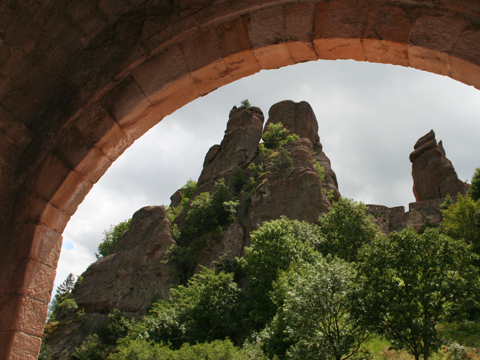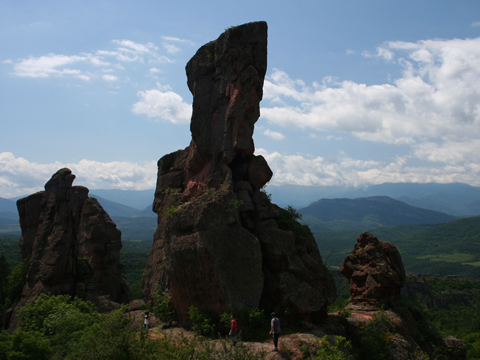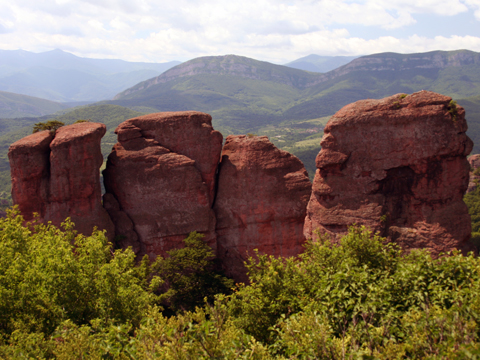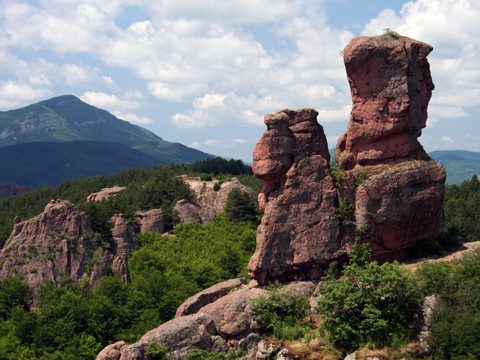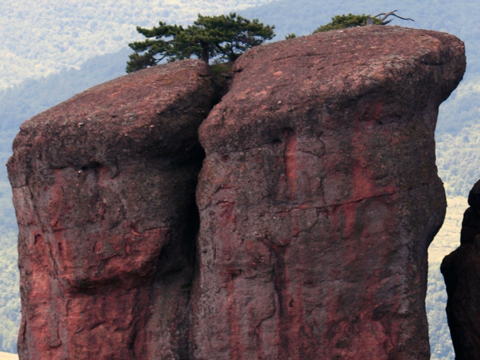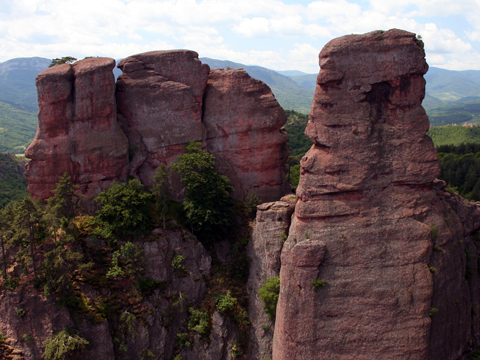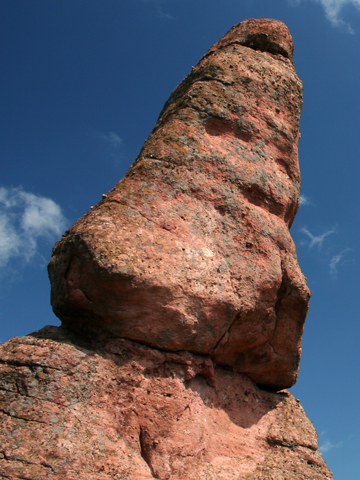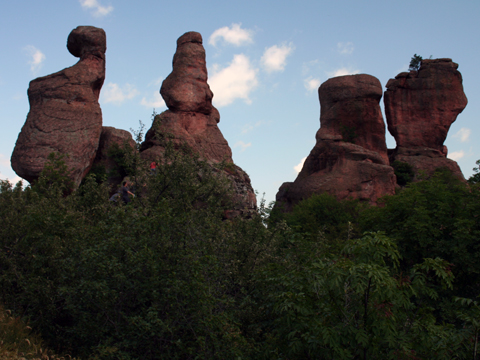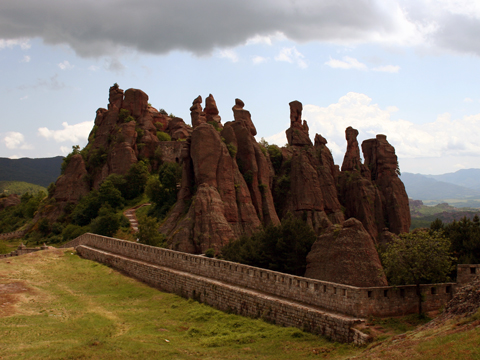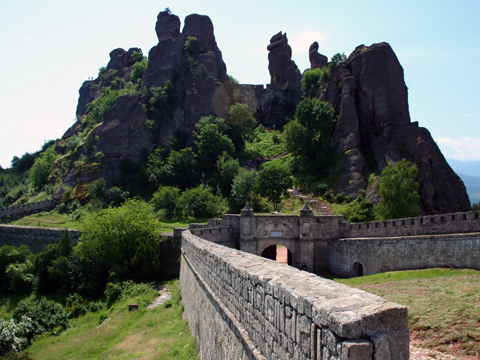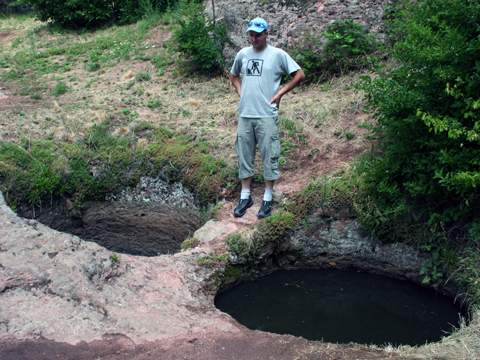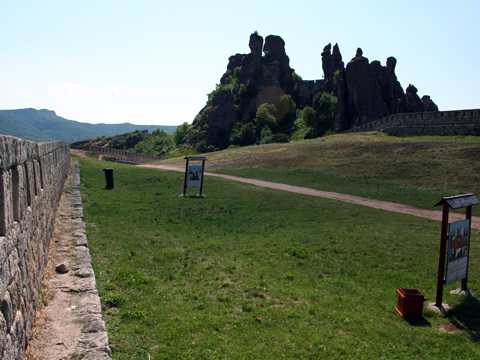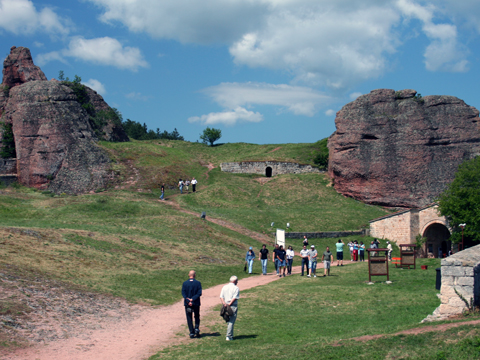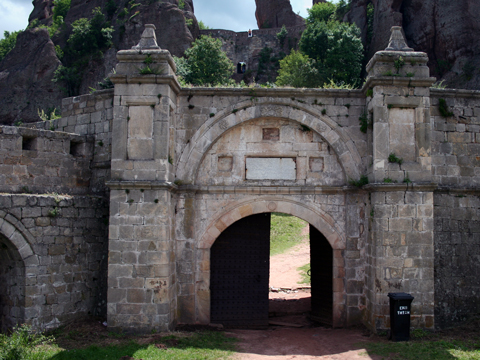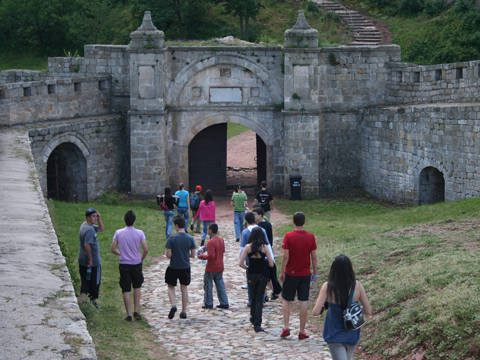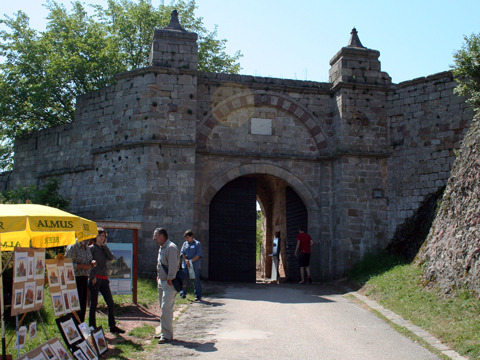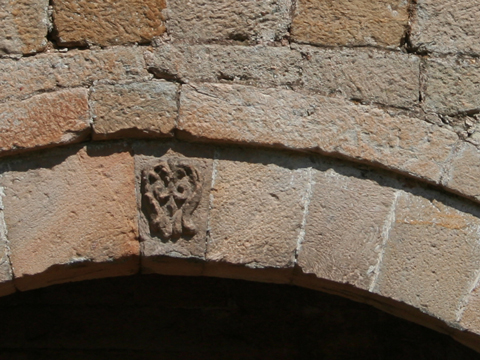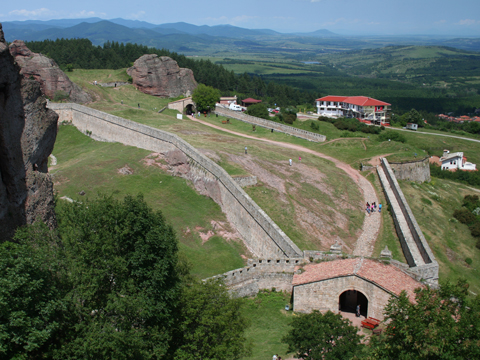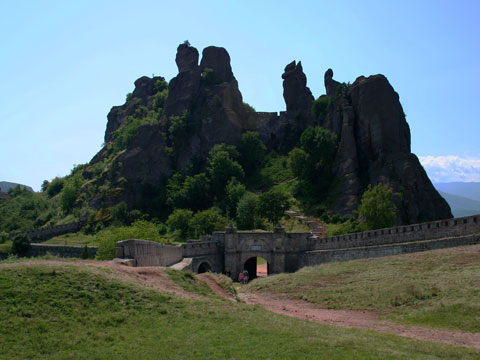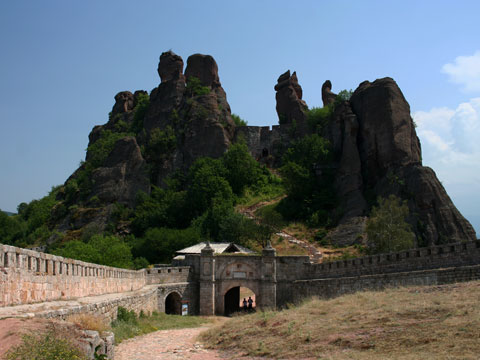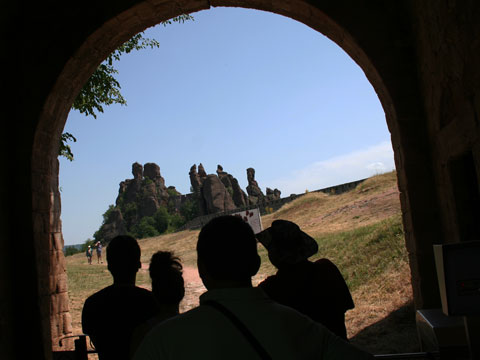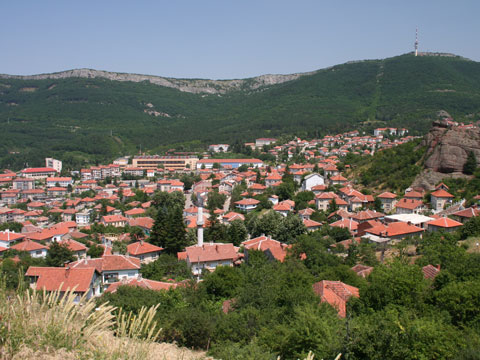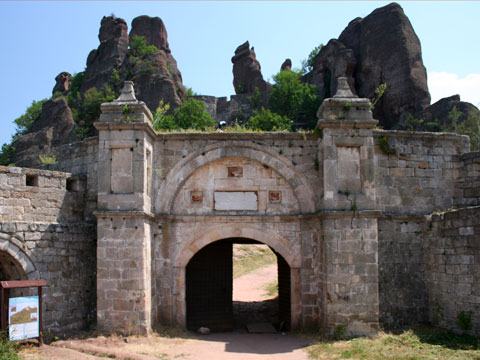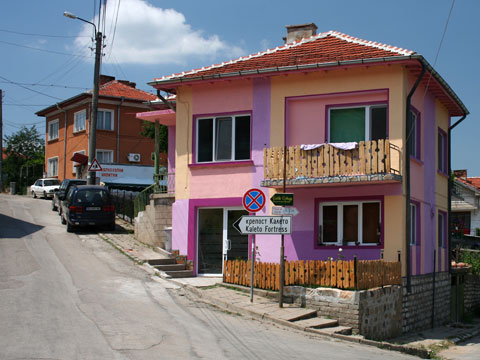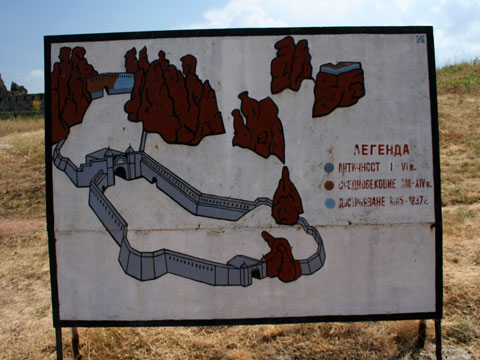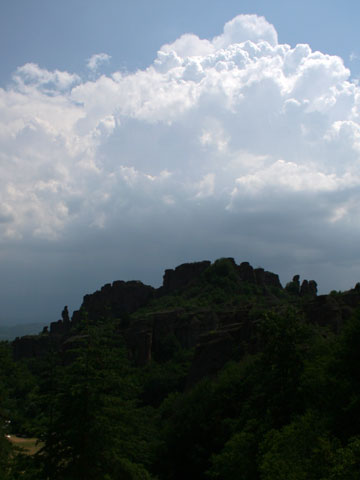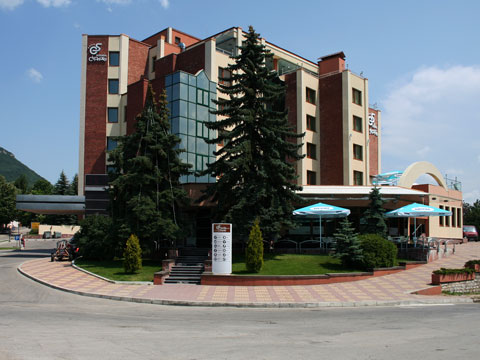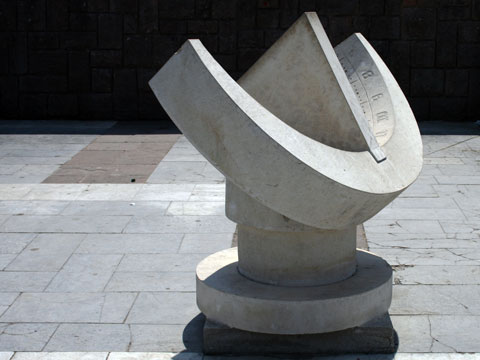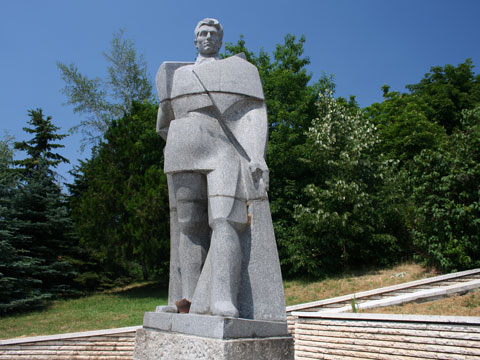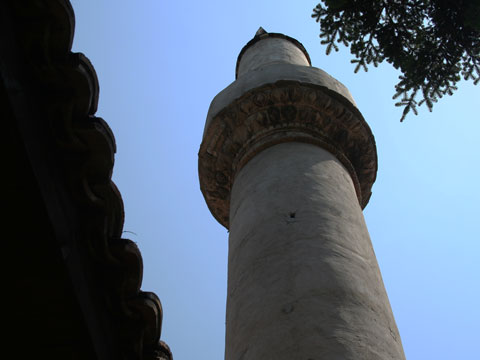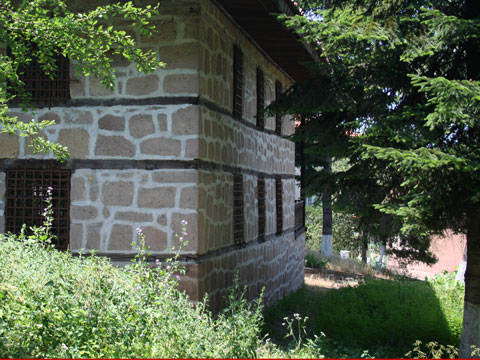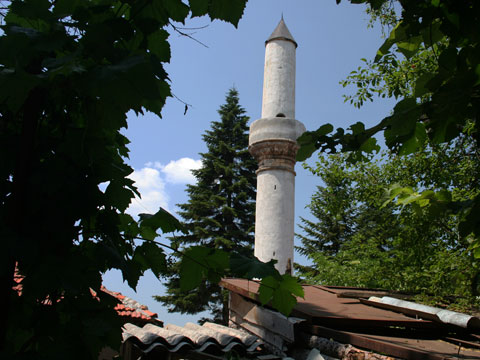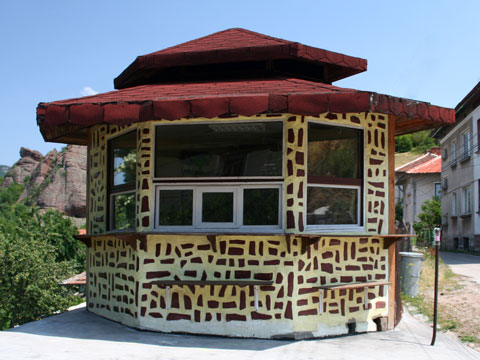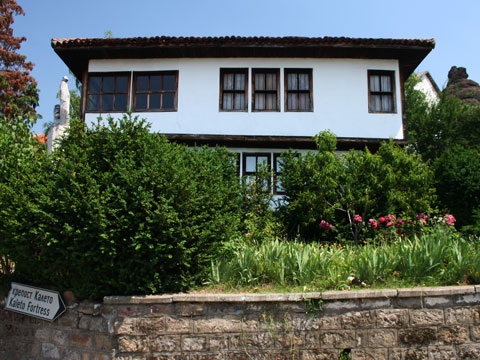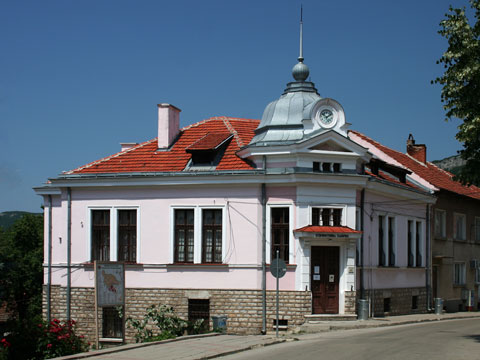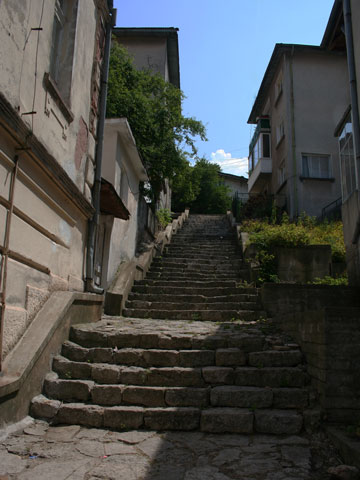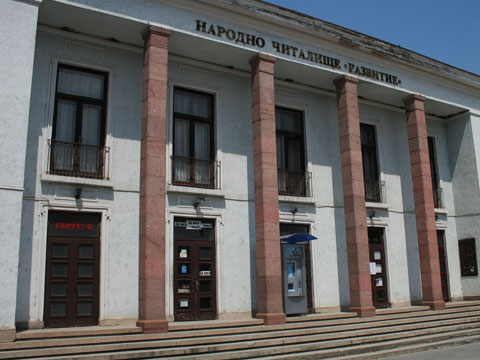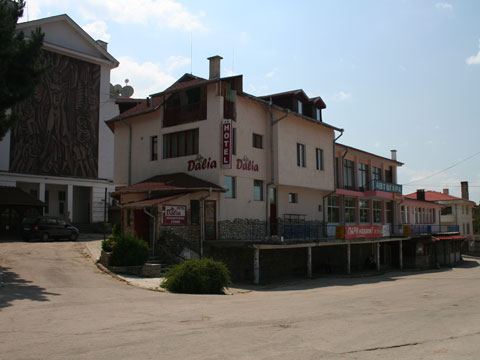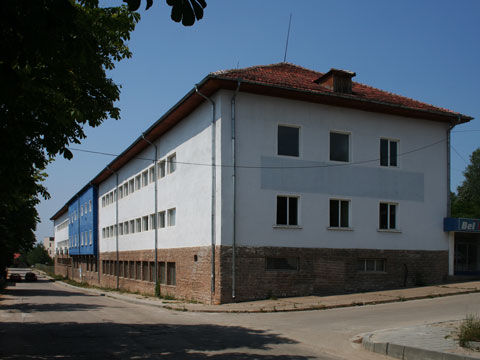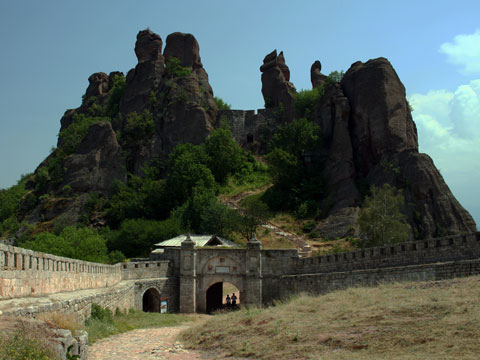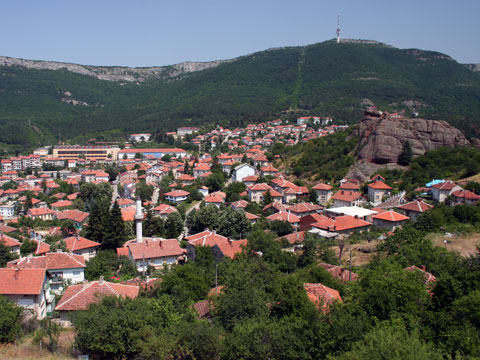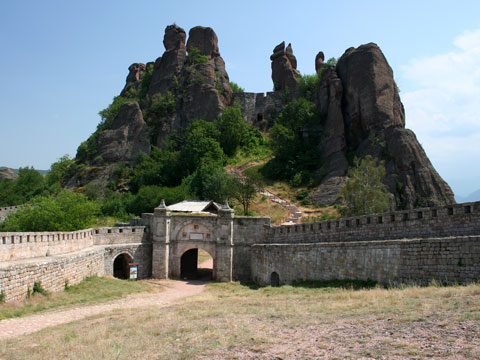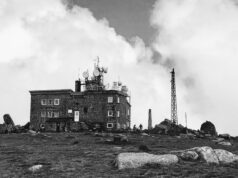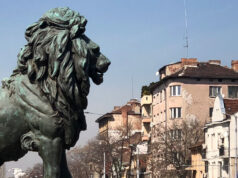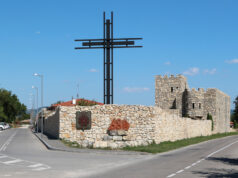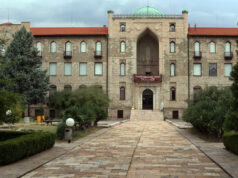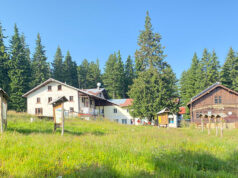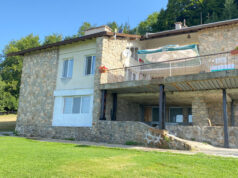 Belogradchik town is located in northwestern Bulgaria, about 200 km from Sofia. It is a popular tourist destination because of the unique Belogradchik Rocks and the Ottoman Belogradchik Fortress called Kaleto.
Belogradchik town is located in northwestern Bulgaria, about 200 km from Sofia. It is a popular tourist destination because of the unique Belogradchik Rocks and the Ottoman Belogradchik Fortress called Kaleto.
The Belogradchik Rocks are one of the natural wonders of Bulgaria, declared a national landmark in 1949. The rocks consist of four independent groups and reach a height of up to 200 meters. They are formed from impressive sandstone and limestone accumulations in red, grey and yellow colors that cover a large area of 80 square kilometers. Weathered over millions of years, it is easy to find figures of men and animals among the striking structures. Interesting legends have grown to accompany the site.
The Belogradchik fortress, known also as Kaleto, is one of the most attractive historical monuments in Bulgaria. This ancient stronghold was first built among the rocks while the Balkan Peninsula was part of the Roman Empire, during the 3rd century A.D. The rock formations served as natural protection, and fortified walls were built only in the northwest and southeast, with the keep surrounded by rock up to 70 meters high on the other sides. The fortress walls are over 2 meters thick at the base and reach up to 12 meters in height. Three separate fortified yards exist that are connected to each other through gates.
The Bulgarian czar Ivan Stratsimir extended the old fortress in the 14th century, building fortified garrisons below the rock massif. During his rule, the Belogradchik Fortress became one of the most important strongholds in the region. In 1396, the fortress was captured by the Ottomans. Renovations in the 19th century expanded the fortress to what can still be seen today.
The stronghold had an important role in the Ottoman suppression of the Belogradchik Uprising of 1850. It was last used in warfare during the Serbo-Bulgarian War in 1885.


